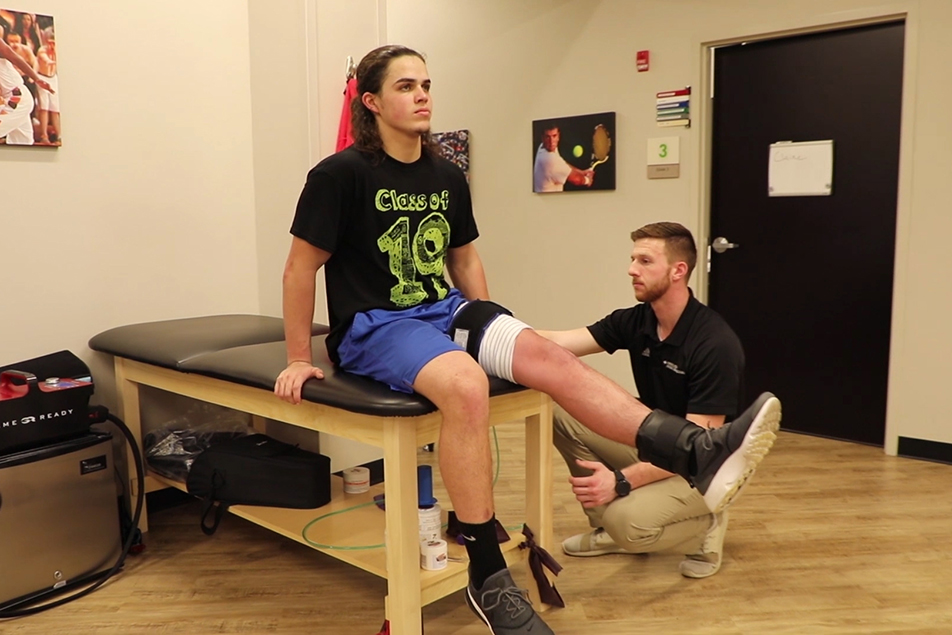Blood flow restriction (BFR) training is a cutting-edge physical therapy technique that can be utilized to treat a wide array of conditions. Jon Dettmer, PT, DPT, Parkview Athletic Rehabilitation, discusses the therapy and its benefits.
What is BFR training?
BFR training is a new physical therapy technique used in both rehabilitation and performance training. The therapy increases strength and muscle size without the stress of loading heavy weight on the body. It has gained popularity because of its significant benefits to both rehabilitating and healthy athletes.
Benefits of BFR training
Think of BFR as a therapy that helps a muscle get stronger without using a heavy weight or high-intensity exercise. This is incredibly beneficial to a patient rehabbing after injury or procedure, when patients often experience muscle atrophy due to a low activity level.
If you’re recovering from an injury or procedure, BFR is crucial because it allows you to maintain muscle mass and strength as you rehabilitate. If you’re a healthy athlete, BFR is a great option because it can also help you build and maintain muscle without the risk of injury that comes with continued high-intensity training.
How does BFR therapy work?
BFR works by partially restricting the blood flow to an arm or leg while a patient exercises with a very low weight or at a low intensity. The process would look like:
- A pressurized cuff, connected to a BFR unit, is placed on the upper portion of an arm or leg.
- The cuff tightens, completely restricting blood flow in the veins and partially restricting the oxygenated blood flow in the arteries of that muscle.
- Patients perform a low-intensity exercise – typically 20-30% of their maximum output – with a small weight plate or resistance band.
Exercising while using BFR essentially leads to an increase in growth hormone in that muscle, allowing the muscle to synthesize protein and get stronger.

Is BFR training safe?
In general, BFR training is as safe or safer than high-intensity exercise. Your body reacts to BFR similarly to how it would to high-intensity training, so you’re getting the same benefits without the risk of injury.
You should not use BFR therapy if you have:
- severe high blood pressure
- a blood clotting disorder
- active cancer
- impaired circulation
- sickle cell anemia
- had a lymphadenectomy
- an open fracture or soft tissue injury
BFR training should only be performed with FDA-approved equipment under the supervision of a trained therapist.
Who should use BFR training?
One of the best things about BFR therapy is that it’s beneficial for almost anyone, injured or healthy, as it helps rebuild muscle mass if you’re recovering from injury and leads to increased muscle mass as part of a normal, healthy training regimen.
BFR can be used with nearly any exercise, with the exception of plyometrics, which should be avoided while using BFR therapy. It can be coupled with many other exercises, including cardiovascular training.



